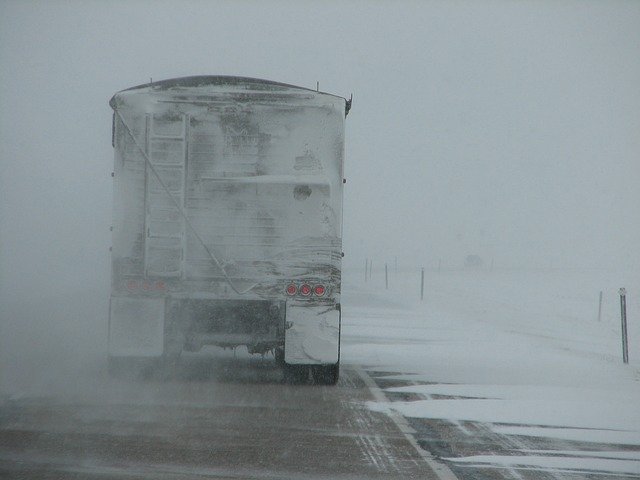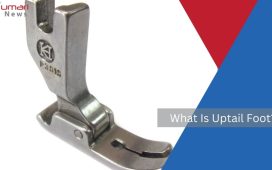For many of us, winters are the most favourite time of the year. What is there not to like about winters? We have Christmas and New Year’s Eve during this time. Kids enjoy winters for their own reasons – making snowmen, and snow angels. Likewise, many adults head out to skiing and other fun activities. While winters are no doubt fun, they are also a cause of many road accidents.
[expander_maker id=”1″ more=”Read more”]
Statistics from around the world show that drivers are more likely to be involved in an accident during winter months. The reasons are obvious. Icy and snow-covered roads prevent the vehicles from gripping adequately, leading to a loss of grip. Hence, the cars end up ramming into each other or other property.
In addition to this, drivers do not keep a safe distance between their car and the one in front. When they apply the brakes, it takes longer to bring the vehicle to a stop because of the snow-covered road. Usually, it results in an accident. These two points highlight that winter driving is quite different from driving in the summer and other months.
While there are numerous other ways which lead to accidents in winter months, the focus of this article is a bit different. Instead of focusing how accidents take place in winter, I will be focusing winter driving tips.
1. Winter Tires
The tires are the only point of contact between the surface and the vehicle. Despite it, drivers overlook the importance of tires to their safety. Therefore, the first tip for safe driving in the snow is to buy a good set of winter tyres. Unfortunately, drivers believe that their all-season or standard tyres are enough. However, it is not the case. Many countries have made it mandatory to equip your vehicle with specialized winter tyres during the winter. Failure to do so results in black points and hefty fines.
Winter tyres are also referred to as snow tyres. They have larger gaps on their treads, allowing for more traction on snowy and icy surfaces. Apart from this, they are made from special rubber which stays flexible in low temperatures. A standard tyre loses its flexibility in low temperatures, rendering it useless in winter months. Therefore, make sure to equip your vehicle with winter tyres when the temperatures hit below 7℃.
2. Prepare Your Car
Winter or snow driving requires quite a bit of preparation. With regards to your vehicle, make sure that the battery works perfectly fine. Winters are notorious for dead batteries. So, make sure that the battery is perfectly fine. The second thing that is notorious for breaking down in winters is the alternator belt. Due to the low temperatures, the alternator belt stiffens, resulting in cracks. It prevents the battery from charging. Therefore, make sure that these two parts are in perfect working conditions.
In addition to this, make sure that the exhaust pipe is not clogged with snow, ice, or any other particles. A clogged exhaust pipe will result in leaking of deadly carbon monoxide into the passenger compartment when the engine is running. Also, make sure that the headlights, heating, and other equipment are working fine. Likewise, always ensure that the vehicle has half a tank of fuel. Lastly, check your wipers and use a good quality screen wash as it might come handy in low visibility conditions.
3. Prepare Yourself
Keep an extra pair of warm clothes and a blanket with you during winter driving. This way, if you get stuck, you can keep yourself warm. Similarly, keep supplies of food and water as well. Lastly, keep a torch with you. The point of mentioning these things is that if you get stuck in snow, you can keep yourself going till help arrives. Otherwise, getting stuck in snow reduces your chances of survival very quickly.
Talking of survival, keep a shovel in the trunk. If you stuck in snow, you can use the shovel to remove the snow. One more thing, ensure that you have jumper cables in the back. You may not need them yourself, but you can use them to help others. Although it might seem superfluous, keep high visibility winter gear. It will help in tracking you in case you are trapped.
4. Drive Only When Necessary
The second winter driving safety tip is to drive only when absolutely necessary. It is better to avoid extra or unnecessary driving because of the road conditions. Well, I am not questioning your driving ability. Most of you might well be well-experienced drivers. But there is no point in putting yourself and others in harms way. Therefore, only venture out when there is no other option left.
5. Inform Others About Your Plans
If you are looking to head out, make sure to inform your friends or family about your plan. Tell them about the route you are planning to take, your estimated time of leaving and other relevant details. This way, if you end up in an untoward situation, others can come looking for you and inform the emergency services in time. Do not take this advise lightly!
6. Slow and Steady Wins the Race
Do not take it as a joke. When it comes to snow driving or driving on icy roads, slow and steady is the only thing ensuring your safety. Do not apply the brakes or accelerate suddenly. Consider that your car is full of eggs and a sudden movement will break them. Apart from the monetary losses, it will take considerable time to remove the egg stench from your car! By moving at a slow and steady pace, you can plan your next turn carefully and have an adequate braking distance. Also, there is less chance of oversteering or understeering.
7. Tackling Understeer
When the front tyres lose traction, you will experience understeering. Your vehicle will not move in the direction you are intending to, with no signs of stopping. This usually happens when you turn the front tyres suddenly, go into a turn at high speeds, or apply sudden brakes. The best way to avoid understeer is to slow down while entering into a corner. The best thing to do is to take your foot off the accelerator as applying the brakes will make matters worse.
8. Tackling Oversteer
Oversteer can happen for the same reasons as understeer. But in this case, the rear wheels stop responding. What happens is that the car turns too much in the direction you are trying to steer it. Hence, it is known as oversteer. The best thing to do is slowly take your foot off the accelerator and keep steering in the direction you intend to steer.
Furthermore, for more information on how to control understeer & oversteer, have a look at this video.
9. Turn Off Cruise Control
If your vehicle has cruise control, make sure to turn it off while driving in the snow. A few drivers make the mistake of turning on the cruise control when they see an empty road. However, I urge you keep it off at all times during winter driving.
10. Turn on Stability Control
On the other hand, if your vehicle comes with stability control, make sure to turn it on. Newer vehicles are well-equipped to handle snow driving. Therefore, make sure to take full advantage of these features.
11. Increase the Following Distance
The following distance is the length between your car and the one in front. Increase the distance to 7-10 seconds. It is perhaps the most common winter driving safety tip but also a very crucial one. Do not take it lightly. A larger following distance will help you bring the car to a halt safely if the need arises. Also, it gives you more time to make a turn. Therefore, there is no need for making sharp turns which can cause the vehicle to skid.
12. Do Not Stop While Driving Up a Hill/Slope
While going upwards on a hill/slope, never ever bring the car to a complete stop. The best thing to do is to speed up the car a little on a flat surface before driving up the hill. It will give you much-needed momentum to drive up the hill. Likewise, putting your foot down on the accelerator will just make the wheels spin, causing you to lose control. Therefore, build up a little speed before taking on the hill!
13. Use Low Gears While Driving Down a Hill/Slope
While driving down a hill/slop, make sure to use low gears. Never increase the speed nor use the brakes frequently. Take it easy on the brakes. If you do need to use the brakes, tap it gently. Also, maintain a safe distance between your car the one in front.
Wrapping Up
This concludes our article on the best tips for driving in the snow. We hope that you liked it and consider the article informative. Let us know what you think about these tips in the comments below. If you feel that this article is lacking any vital tip, share your opinions. Thank You.
[/expander_maker]







